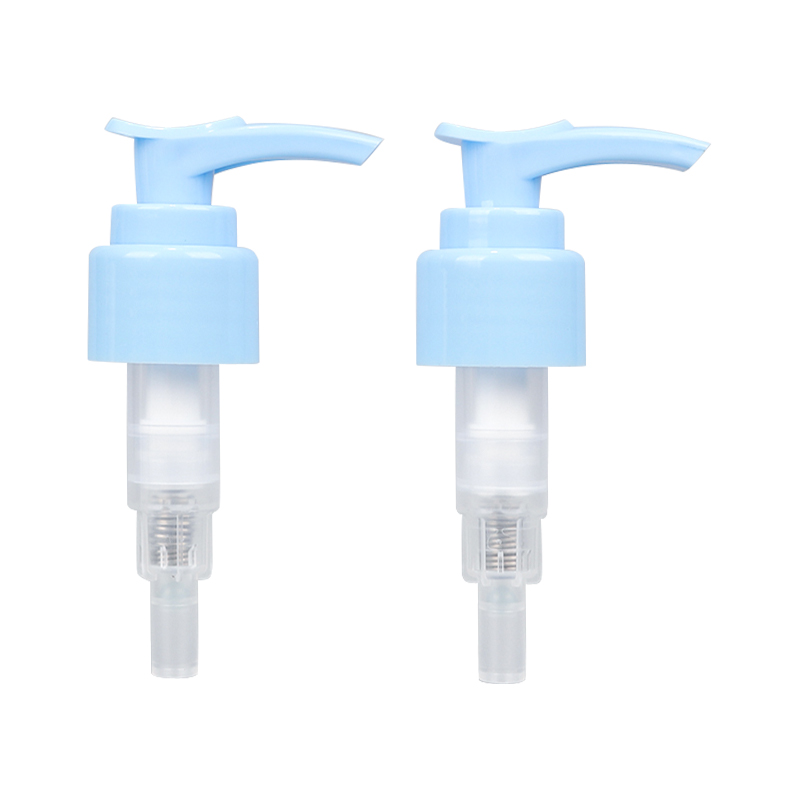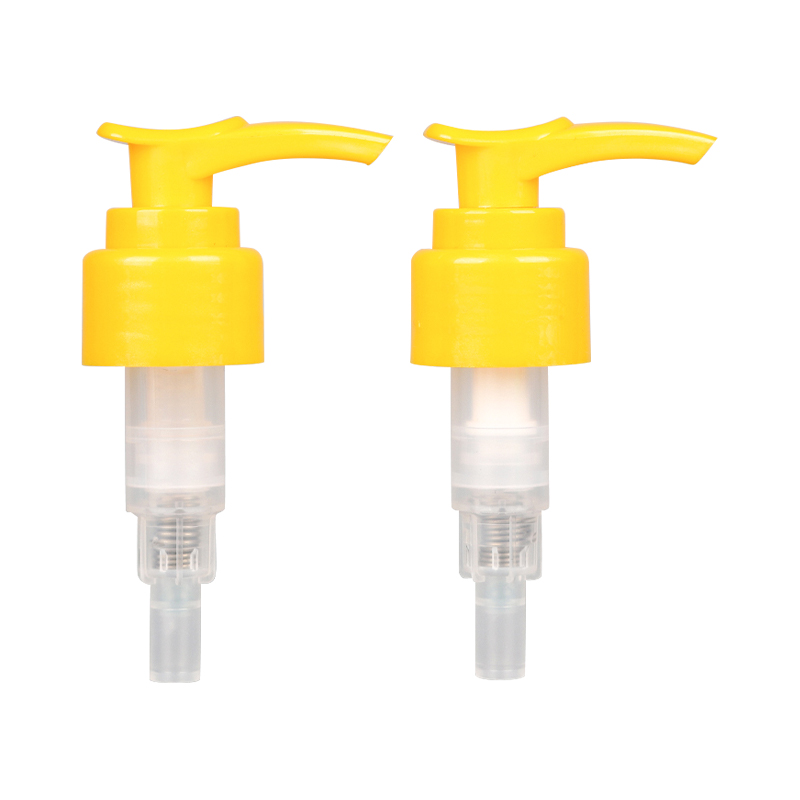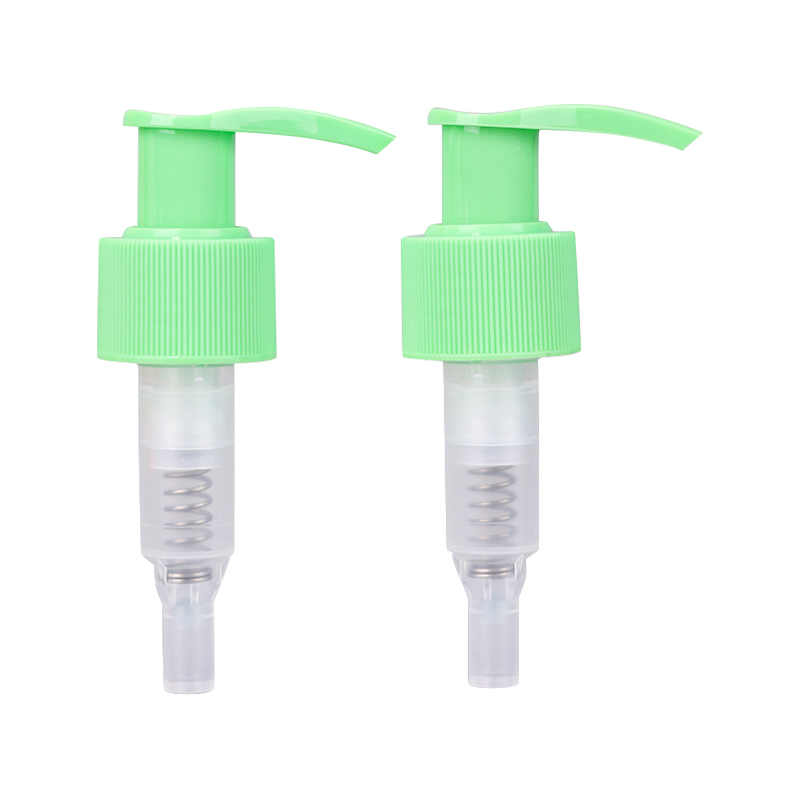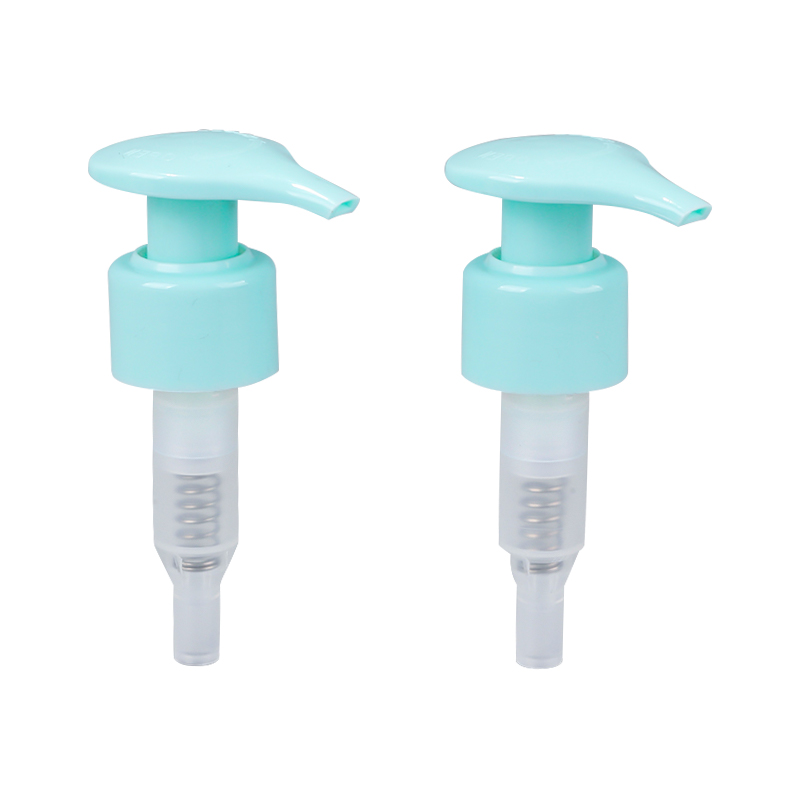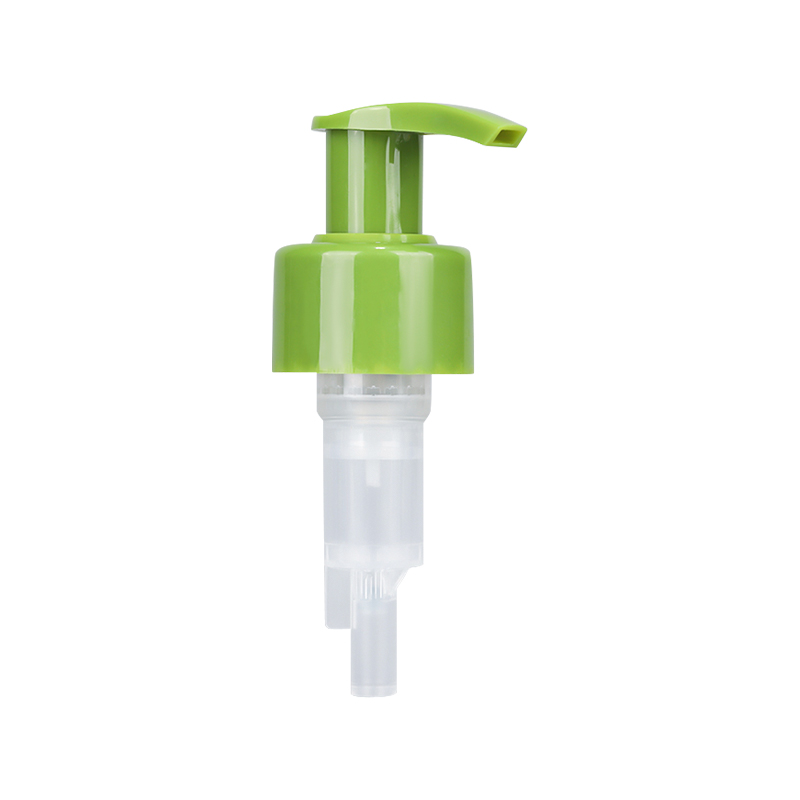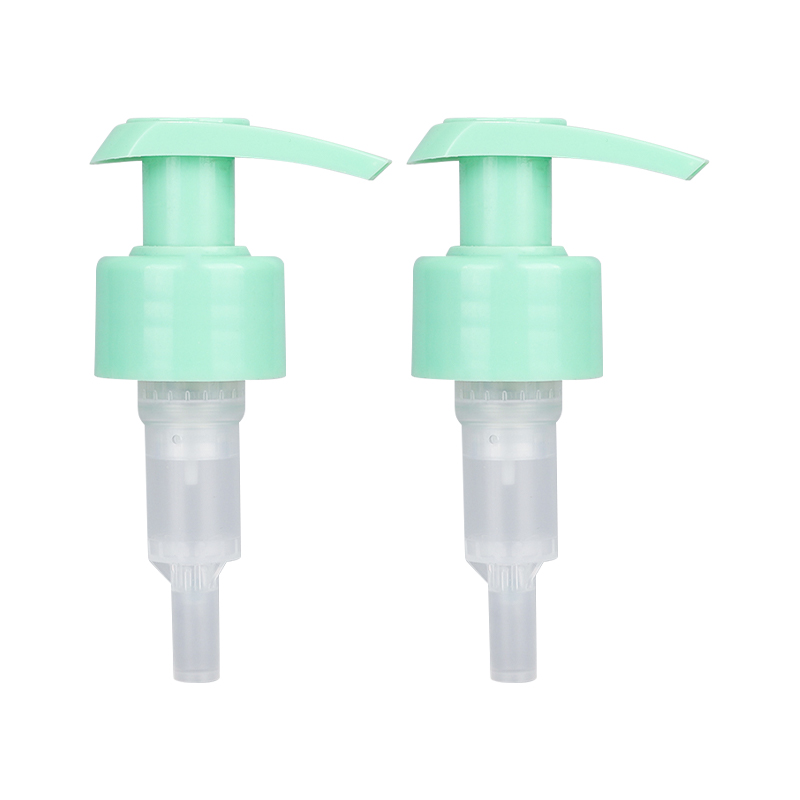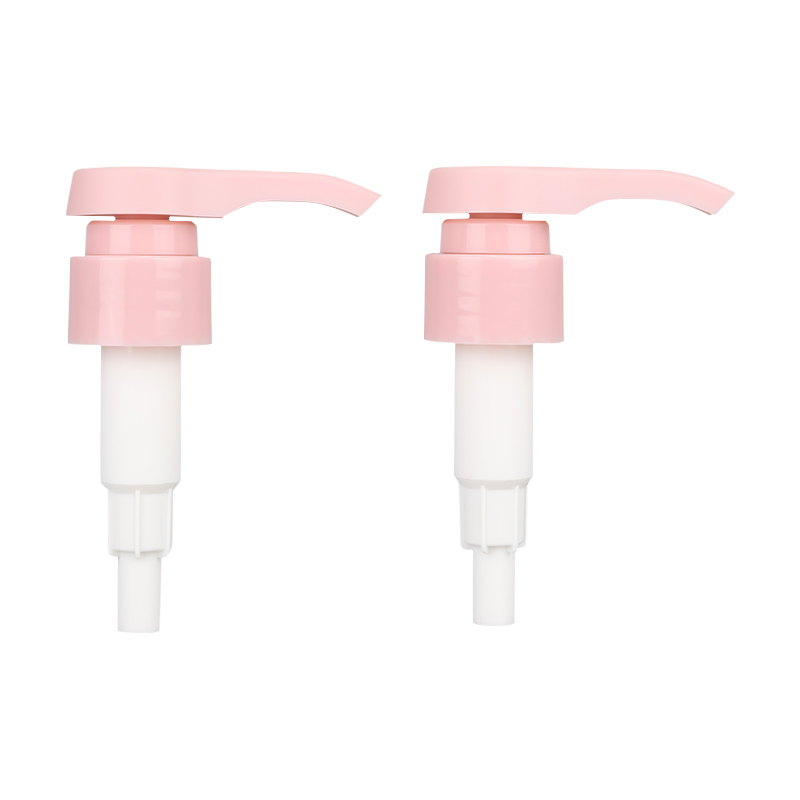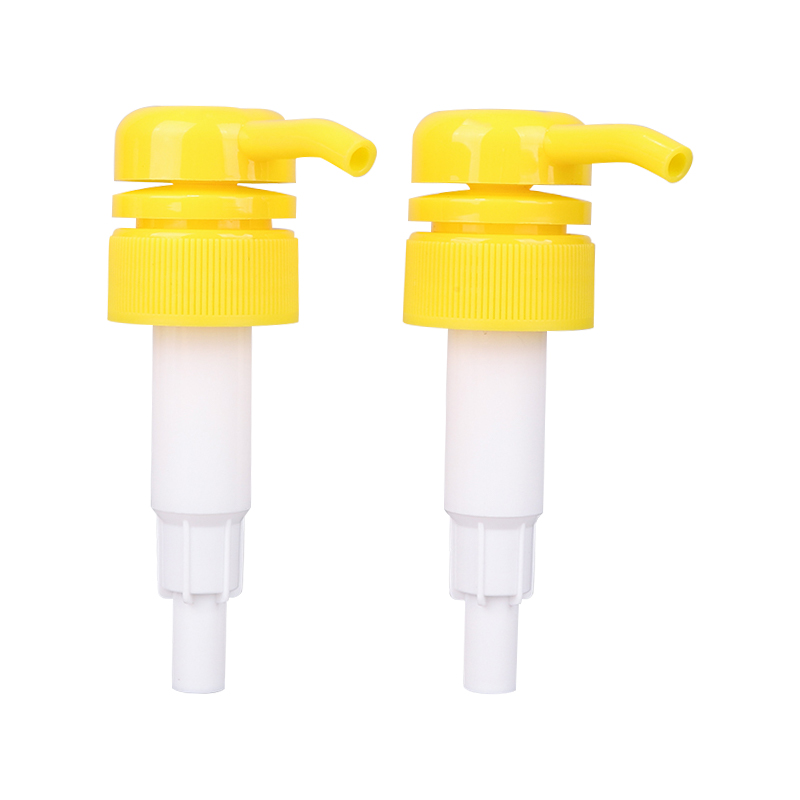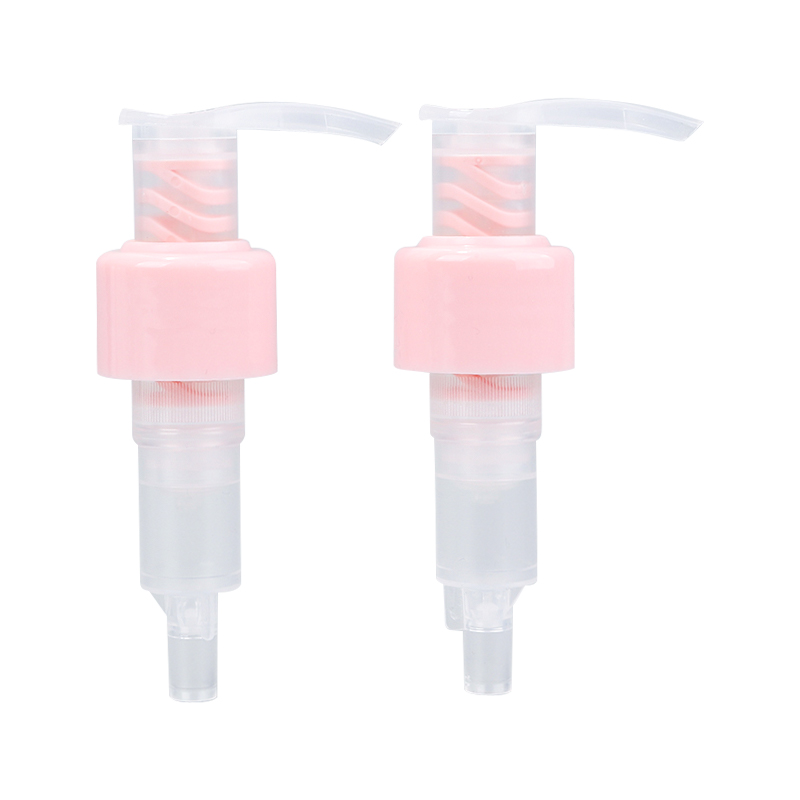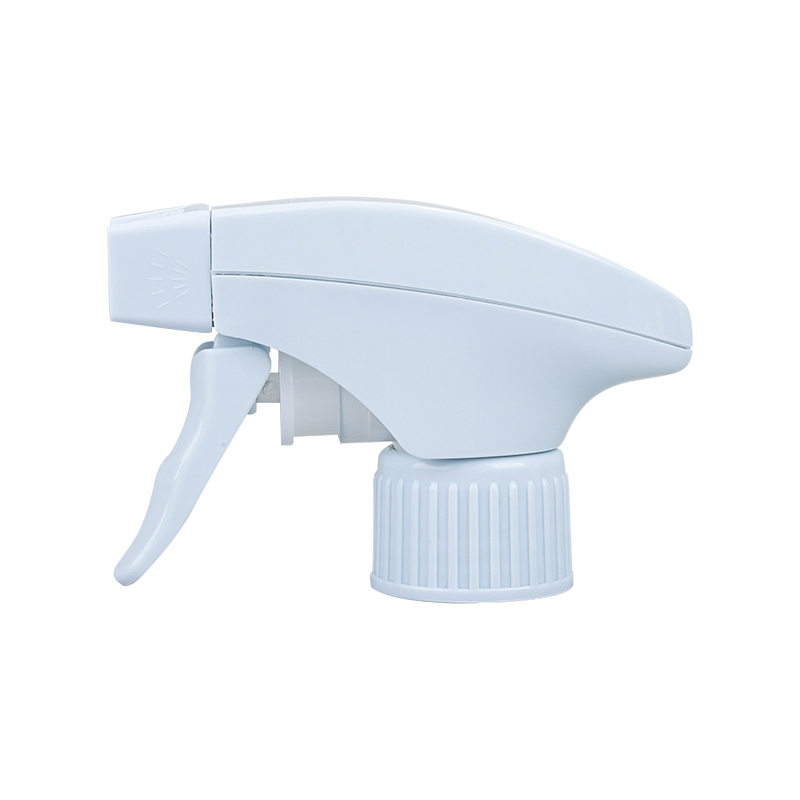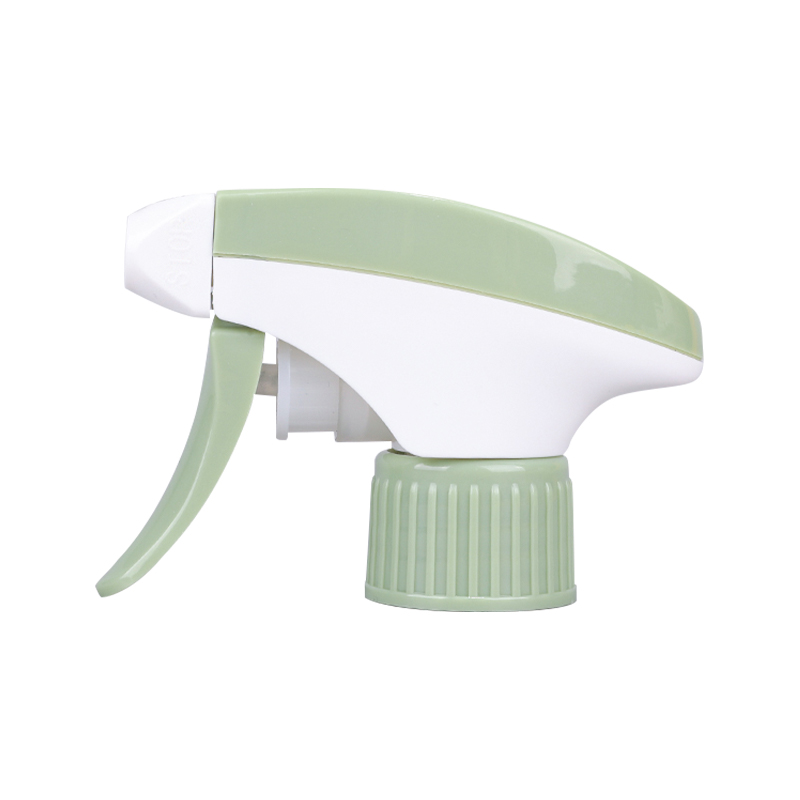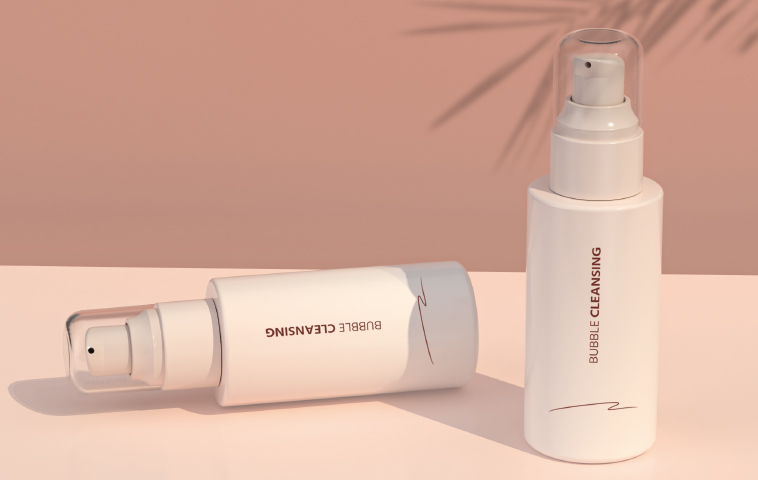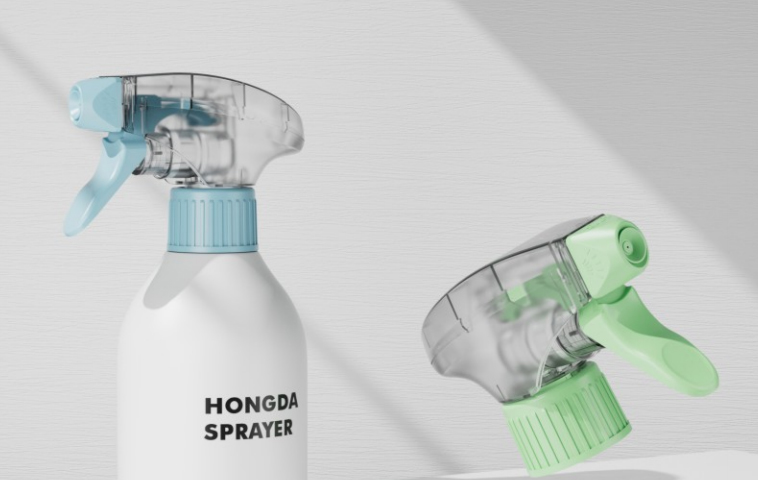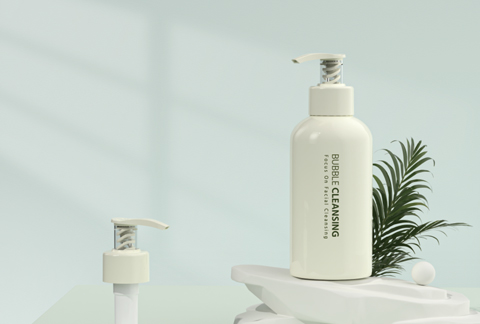Understanding the Basics of Foaming Trigger Sprayer Mechanism for Effective Use
The foaming trigger sprayer is a highly efficient and versatile tool that creates foam by dispensing liquids in a controlled manner. This mechanism plays a crucial role in cleaning, disinfecting, and applying various types of products, such as soaps, detergents, cleaning agents, and even certain cosmetics. Understanding how this sprayer works is essential to ensure its effective use in both household and industrial settings. In this section, we will explore the components, working mechanism, advantages, and applications of the foaming trigger sprayer.
1. Key Components of a Foaming Trigger Sprayer
The foaming trigger sprayer is designed with several key components that work together to ensure a smooth and effective foam dispensing process. Each part of the sprayer serves a specific function that contributes to its overall performance. The primary components include:
-
Trigger Mechanism: This is the part of the sprayer that the user operates. The trigger is designed to pull a spring-loaded lever that, when squeezed, activates the flow of liquid through the system. It regulates the amount of liquid released and controls the pressure with which it is dispensed.
-
Pump Assembly: The pump assembly is an integral part of the sprayer. It consists of a piston that creates pressure inside the container, forcing the liquid to move upward and through the nozzle. This pressure helps to produce a foam-like consistency when the liquid is dispensed.
-
Nozzle: The nozzle of the foaming trigger sprayer is designed to break the liquid into small droplets, which are then mixed with air to create foam. Nozzles come in various sizes and designs, and their performance largely impacts the foam's texture and density.
-
Straw and Tube: The straw or tube runs from the bottom of the liquid reservoir to the pump assembly. The tube ensures that the liquid is drawn from the container and into the pump assembly when the trigger is activated.
- Bottle or Container: The container holds the liquid that will be dispensed. It is typically made of plastic or other durable materials and can vary in size depending on the intended use of the sprayer. The material of the container must be compatible with the liquid to avoid corrosion or damage.
2. The Working Principle of a Foaming Trigger Sprayer
The operation of a foaming trigger sprayer is based on a simple yet effective mechanical principle. The key to its function lies in the interaction between liquid, pressure, and air. The process can be broken down into the following steps:
-
Pressurization: When the trigger is squeezed, it activates the pump, which in turn creates pressure inside the container. This pressure forces the liquid up the straw and into the nozzle. The force at which the liquid is pushed through the nozzle plays a significant role in determining the consistency of the foam.
-
Liquid Dispensing: Once the pressurized liquid reaches the nozzle, it is forced through the tiny opening in the nozzle. As the liquid exits, it is mixed with air, creating a foamy consistency. The nozzle's design and the amount of pressure applied determine the density and texture of the foam. A finer nozzle will produce a denser foam, while a wider nozzle may result in a lighter spray.
-
Foam Formation: The most crucial step in the process is the actual formation of foam. As the liquid exits the nozzle, it is combined with air, which agitates the liquid and causes it to form bubbles. These bubbles are what create the foam. The consistency of the foam is directly impacted by the nozzle design and the pressure applied during dispensing.
-
Controlled Release: The trigger mechanism controls the rate at which the foam is dispensed. A smooth, continuous squeeze will release a consistent amount of foam, while a more forceful squeeze will result in a burst of foam. This control allows for efficient and effective application of foam, whether it’s for cleaning, personal care, or industrial purposes.
3. Factors Affecting Foam Quality and Consistency
The quality and consistency of foam produced by a foaming trigger sprayer are influenced by several factors. These factors must be carefully considered when using the sprayer for specific tasks to achieve the desired results:
-
Liquid Viscosity: The viscosity or thickness of the liquid being dispensed plays a significant role in foam formation. Thicker liquids tend to produce denser foam, while thinner liquids may result in a lighter, airier foam. It is essential to choose the right type of liquid based on the task at hand to ensure optimal foam quality.
-
Nozzle Design: The nozzle is one of the most critical components in determining the quality of foam produced. Nozzles with smaller holes create finer mist and denser foam, while larger holes produce a lighter spray. The nozzle design should match the type of foam required for the job, whether it is for cleaning or personal care.
-
Pressure: The amount of pressure applied by the pump assembly is another key factor in foam formation. Higher pressure leads to a more vigorous release of foam, while lower pressure results in a more controlled and gentle spray. Depending on the intended use, the pressure can be adjusted to produce the desired foam consistency.
-
Air-to-Liquid Ratio: The ratio of air to liquid in the foam mixture is crucial for foam formation. A higher air-to-liquid ratio results in lighter, fluffier foam, while a lower ratio creates denser foam. This ratio can be controlled by adjusting the nozzle and pump assembly to achieve the desired consistency.
4. Advantages of Using a Foaming Trigger Sprayer
The foaming trigger sprayer offers several advantages over traditional spray bottles and other dispensing systems. Some of the primary benefits include:
-
Better Coverage: The foam dispensed by a foaming trigger sprayer adheres better to surfaces compared to a liquid spray. This ensures more even coverage, especially when cleaning large or vertical surfaces, such as windows or countertops.
-
Improved Efficiency: Foam covers a larger surface area more effectively, meaning that less product is needed to achieve the desired results. This makes foaming trigger sprayers highly efficient in terms of product usage, reducing waste and costs.
-
Controlled Dispensing: The ability to control the amount of foam dispensed with a trigger sprayer ensures that the right amount of product is used each time. This is particularly useful in industrial and commercial settings, where precise application is necessary.
-
Versatility: Foaming trigger sprayers can be used with a wide range of liquids, including cleaning agents, disinfectants, soaps, and even cosmetics. Their versatility makes them suitable for various applications, from household cleaning to professional industrial tasks.
-
Enhanced Performance: By creating foam, these sprayers increase the dwell time of the liquid on the surface. Foam tends to stay in place longer than a mist or spray, allowing the cleaning solution to work more effectively before it is wiped away.
5. Applications of Foaming Trigger Sprayers
Foaming trigger sprayers have numerous applications in both household and industrial settings. Their ability to dispense foam makes them particularly well-suited for a wide variety of tasks:
-
Household Cleaning: Foaming trigger sprayers are commonly used for cleaning tasks around the home, including kitchen and bathroom cleaning. The foam adheres well to surfaces, allowing cleaning solutions to break down grime, grease, and soap scum more effectively.
-
Industrial Cleaning: In industrial settings, foaming trigger sprayers are used to clean machinery, equipment, and large surfaces. The ability to dispense cleaning solutions in a controlled and consistent manner makes them ideal for these applications.
-
Personal Care and Cosmetics: Foaming trigger sprayers are widely used in the beauty and personal care industry for dispensing products such as facial cleansers, shampoos, and body washes. The foam consistency makes these products easier to apply and creates a luxurious experience for the user.
-
Disinfecting: Foaming trigger sprayers are highly effective for disinfecting surfaces, especially in high-touch areas like door handles, countertops, and bathroom fixtures. The foam's ability to stay in place for longer ensures that disinfectants have more time to kill harmful bacteria and viruses.
Key Features to Look for in a Foaming Trigger Sprayer for Household Applications
When selecting a foaming trigger sprayer for household use, understanding the key features that impact performance and user experience is essential. Foaming trigger sprayers are ideal for tasks such as cleaning, disinfecting, and personal care, providing efficient and effective solutions. The design and features of these sprayers directly influence their versatility, ease of use, and the quality of the foam they generate. In this section, we will explore the essential features to consider when choosing a foaming trigger sprayer for household applications.
1. Spray Nozzle Design and Foam Output
The nozzle is one of the most critical components in a foaming trigger sprayer. It determines the type and quality of the foam dispensed. Different nozzle designs can produce varying spray patterns and foam textures, which are important for different household cleaning tasks. Adjustable Nozzle: One of the primary features to look for is an adjustable nozzle. An adjustable nozzle allows the user to control the foam output, switching between a finer mist for delicate surfaces and a denser foam for tougher cleaning tasks. This feature adds significant flexibility, making the sprayer suitable for a variety of tasks, from cleaning countertops to applying disinfectants on floors. Fixed vs. Adjustable Foam Patterns: Some sprayers offer fixed foam patterns, producing a consistent spray regardless of the user’s input. While these models may be simpler, they lack the precision and flexibility that adjustable nozzles provide. For household applications, having the option to adjust the foam pattern ensures that the sprayer can be used across different cleaning environments, whether you’re tackling large surfaces or detailed tasks. Foam Density: The foam density produced by the nozzle is essential for effective cleaning. Denser foam tends to stay longer on surfaces, allowing cleaning solutions to break down grime, soap scum, and grease more efficiently. On the other hand, lighter foam may evaporate too quickly to be effective for some cleaning tasks. The choice of nozzle and pressure setting affects this property, and for household applications, dense foam is usually preferred for tasks that require deep cleaning.
2. Ergonomics and Comfort of Use
A foaming trigger sprayer for household use should be comfortable and easy to operate, especially if you plan to use it for extended periods. The design of the sprayer’s handle and trigger mechanism plays a significant role in reducing hand fatigue and improving usability. Ergonomically Designed Handle: An ergonomically designed handle ensures that the sprayer is easy to hold, reducing strain on the hand and wrist. Look for a handle with a soft grip or contoured shape that fits comfortably in your hand. This is especially important when cleaning large areas or using the sprayer for extended periods. An ergonomic handle also ensures that the user can apply consistent pressure on the trigger without experiencing discomfort. Trigger Action: The trigger action of the sprayer is another critical factor. The best foaming trigger sprayers have a smooth, responsive trigger that requires minimal effort to operate. A trigger that is too stiff can cause hand fatigue, especially if used repeatedly. A high-quality sprayer will have a well-engineered trigger mechanism that is easy to squeeze, even when using the sprayer for long cleaning sessions. Additionally, some models feature a lockable trigger for continuous spraying, eliminating the need for constant squeezing and offering convenience during extended use. Weight and Balance: The overall weight and balance of the sprayer affect its usability. A well-balanced sprayer will feel stable and easy to control, while a heavy or poorly balanced model can cause hand fatigue or make precise spraying difficult. Lightweight materials, such as high-grade plastics, are often used in foaming trigger sprayers to ensure durability without adding unnecessary weight.
3. Capacity and Volume of the Container
The capacity of the container is a crucial factor when choosing a foaming trigger sprayer for household use. Depending on the tasks at hand, you may need a smaller or larger container to hold the cleaning solution. The size of the container affects how often the sprayer needs to be refilled, which can impact efficiency during cleaning. Smaller Containers: A smaller container is more suitable for light household tasks or applications where only a small amount of solution is needed. It is more portable and easier to store but requires frequent refilling. Larger Containers: A larger container holds more liquid, reducing the need for constant refills. This is beneficial for large cleaning jobs, such as washing windows or cleaning floors. However, larger containers can be heavier, which may affect the overall comfort of use. Material Compatibility: Ensure that the container is made of durable materials that are compatible with the cleaning solution being used. Some chemicals can cause damage to certain plastics, leading to degradation over time. A good-quality foaming trigger sprayer will have a container that is resistant to corrosion and chemical damage, ensuring longevity even when used with harsh cleaning agents.
4. Pressure and Foam Control
The pressure and foam control features of a foaming trigger sprayer are essential for delivering the desired foam output consistently. The pressure is determined by the pump assembly and nozzle design, while the foam control can be adjusted through the nozzle or trigger mechanism. Pressure Control: Some foaming trigger sprayers come with an adjustable pressure mechanism that allows users to control the force with which foam is dispensed. Higher pressure is ideal for larger cleaning areas or more stubborn grime, while lower pressure is better for delicate surfaces that require a gentle mist or foam. Foam Control: Adjustable foam control features are essential for tailoring the foam output to the task at hand. The ability to control the foam’s consistency allows for versatile use, from light mists to dense foam for scrubbing. Spray Range: The range at which the foam can be sprayed is another important feature. A longer spray range provides greater flexibility, allowing the user to reach higher surfaces or spray from a distance. This is particularly useful when cleaning large windows or high cabinets.
5. Durability and Material Quality
The durability of a foaming trigger sprayer is a critical factor to consider, especially for household applications where the sprayer may be used frequently. The materials used in the construction of the sprayer impact its lifespan and ability to withstand repeated use. Corrosion-Resistant Materials: The sprayer’s container and pump mechanism should be made of corrosion-resistant materials to ensure it lasts longer when exposed to various cleaning agents. Stainless steel or high-grade plastic components are often preferred, as they can withstand the wear and tear caused by frequent use. Impact-Resistant Design: An impact-resistant design helps prevent damage if the sprayer is accidentally dropped or knocked over. Look for sprayers made with sturdy materials that can handle physical stress without breaking or malfunctioning. UV Protection: In some cases, the sprayer may be exposed to sunlight, especially if it is used for outdoor cleaning tasks. A foaming trigger sprayer with UV protection ensures that the material does not degrade or weaken over time when exposed to sunlight.
6. Ease of Cleaning and Maintenance
Keeping your foaming trigger sprayer clean and well-maintained is essential for optimal performance. Over time, residue from cleaning solutions can build up inside the sprayer, potentially clogging the nozzle or damaging the pump mechanism. Removable Parts for Easy Cleaning: A foaming trigger sprayer with removable parts, such as the nozzle and trigger mechanism, makes it easier to clean after each use. Being able to disassemble the sprayer ensures that every part can be thoroughly cleaned and maintained. Anti-Clog Nozzle: Look for sprayers that feature an anti-clog nozzle, which helps prevent debris and residue from building up inside the nozzle. This feature ensures that the sprayer continues to function smoothly, providing consistent foam output over time. Maintenance Tips: Regularly flushing the sprayer with warm water after each use helps remove any remaining cleaning solutions and prevents clogging. Additionally, checking for wear and tear on parts like the trigger and pump assembly ensures the sprayer continues to operate effectively.

How to Select the Best Foaming Trigger Sprayer for Industrial Cleaning Tasks
Industrial cleaning requires highly efficient and effective tools that can handle large-scale, demanding environments. The foaming trigger sprayer, when chosen correctly, can significantly improve cleaning performance and efficiency in industrial settings. From manufacturing plants to warehouses, these sprayers help in applying cleaning agents, disinfectants, and other solutions in a manner that ensures thorough coverage and reduced chemical usage. This section explores the critical features to consider when selecting the best foaming trigger sprayer for industrial cleaning tasks.
1. Durability and Resistance to Harsh Chemicals
Industrial cleaning often involves the use of aggressive chemicals, including strong detergents, disinfectants, and solvents. As a result, the durability of the foaming trigger sprayer is of paramount importance. The materials used in the sprayer’s construction must be able to withstand prolonged exposure to these harsh substances without degrading or breaking down.
Chemical-Resistant Components: Look for sprayers made with chemical-resistant materials such as high-density polyethylene (HDPE), polypropylene, or stainless steel. These materials can endure the corrosive effects of industrial-grade chemicals without deteriorating or losing structural integrity. Corrosion-Resistant Parts: Industrial sprayers should also feature corrosion-resistant components to prevent rusting and erosion over time, particularly if the sprayer is used with acidic or alkaline solutions. Stainless steel nozzles and other metallic parts can provide superior corrosion resistance in demanding environments.
2. Spray Pressure and Foam Control
In industrial environments, the cleaning tasks often require a higher level of spray pressure and foam control. Unlike household applications, industrial cleaning typically involves larger surfaces or tougher residues that demand more powerful cleaning solutions.
Adjustable Pressure: A high-quality foaming trigger sprayer should offer adjustable pressure settings. This allows operators to control the spray intensity, ensuring that the foam is dispensed at the right pressure for different tasks. For tougher grime and industrial-scale cleaning, higher pressure ensures that the cleaning agent is dispersed over a large area effectively.
Foam Consistency: The foam consistency is another critical aspect for industrial cleaning tasks. Dense foam is preferred for stubborn dirt and grease, as it can cling to surfaces and break down contaminants more efficiently. Adjustable foam control features are essential for creating foam with the right consistency, which can stay in place for longer, giving cleaning agents more time to work before being wiped off.
3. Nozzle Design and Foam Output Options
The nozzle design is essential for controlling both the foam quality and the spray pattern. For industrial cleaning, the sprayer must offer specific nozzle types that cater to different surface areas and cleaning requirements.
Interchangeable Nozzles: Interchangeable nozzles are a desirable feature in industrial foaming trigger sprayers. Having the ability to change nozzles allows operators to select the most appropriate spray pattern for the cleaning task at hand. For instance, a wider nozzle may be needed for large surfaces like floors, while a finer nozzle is better suited for intricate machinery or tight spaces.
Multiple Spray Patterns: Industrial cleaning tasks often require different spray patterns, from wide coverage to targeted foam streams. A sprayer with multiple spray patterns can be adjusted based on the surface area being cleaned. Some models offer a 360-degree spray pattern, which is useful when cleaning vertical surfaces or overhead areas, as it ensures foam is evenly distributed, regardless of the angle.
4. Large Capacity and Extended Reach
Industrial cleaning jobs often involve large-scale applications where frequent refilling of smaller sprayers would be inefficient. Thus, capacity and reach are critical factors to consider when selecting a foaming trigger sprayer for industrial use.
High Capacity Reservoir: The capacity of the sprayer’s container directly impacts how often it needs to be refilled. For industrial cleaning, larger reservoirs, typically in the range of 1 to 2 liters or more, allow for continuous use without constant interruptions. This is especially important for cleaning vast areas, as it reduces the time spent refilling and allows for more efficient task completion.
Extended Reach: In industrial settings, cleaning high or hard-to-reach surfaces can be a challenge. A sprayer with a longer hose or extended wand ensures that operators can clean elevated surfaces or those in confined spaces without straining or requiring a ladder. An extended reach enhances the versatility of the foaming trigger sprayer, making it easier to tackle industrial cleaning tasks that involve tall machinery, shelving units, or high windows.
5. Ergonomic Design for Prolonged Use
Since industrial cleaning tasks often require extended periods of operation, the ergonomics of the foaming trigger sprayer become crucial. Operators may need to use the sprayer for hours, which could lead to hand strain or fatigue if the design is not optimized for comfort.
Comfortable Trigger Mechanism: The trigger mechanism should be designed for ease of use, requiring minimal force to operate. A sprayer with a well-designed trigger can prevent hand fatigue, ensuring that operators can use the sprayer comfortably throughout the day. Some models come with lockable triggers that allow for continuous spraying without having to hold the trigger down, which further reduces hand strain.
Ergonomic Handle Design: An ergonomically designed handle ensures that the sprayer fits comfortably in the hand, offering a secure and non-slip grip. The handle should have a shape that minimizes stress on the wrist and fingers during prolonged use, allowing for precise control without discomfort.
6. Impact Resistance and Durability
Industrial environments are often fast-paced and can involve rough handling of equipment. Therefore, the foaming trigger sprayer must be built to withstand harsh physical conditions.
Shock-Resistant Construction: An impact-resistant sprayer is essential for environments where tools are likely to be dropped or knocked over. Industrial-grade foaming sprayers are typically designed with reinforced plastic or rubberized handles to withstand accidental drops and impacts, ensuring they continue to function without damage.
Heavy-Duty Materials: Heavy-duty materials, such as high-impact plastic or stainless steel, should be used in the construction of industrial foaming trigger sprayers. These materials ensure that the sprayer remains functional and durable even in tough environments where standard household sprayers may fail.
7. Ease of Maintenance and Cleaning
In industrial cleaning, maintaining the sprayer is vital for consistent performance and longevity. Industrial foaming trigger sprayers often work with strong cleaning agents that can leave residue behind, leading to clogs or malfunctioning if not properly maintained.
Removable and Cleanable Components: The sprayer should have removable components that make cleaning and maintenance straightforward. A detachable nozzle and easy-to-remove pump assembly enable the sprayer to be cleaned thoroughly, preventing build-ups that could impact foam quality or cause the sprayer to malfunction.
Self-Cleaning Features: Some advanced foaming trigger sprayers come with self-cleaning features or anti-clog nozzles that prevent residue build-up. These features ensure that the sprayer remains functional even after extended use with tough chemicals.
8. Cost-Effectiveness and Value for Money
While durability and high performance are crucial, industrial cleaning equipment must also offer good cost-effectiveness. The price-to-performance ratio of a foaming trigger sprayer is an essential consideration, especially in large-scale operations where multiple units may be required.
Long-Term Durability: While the initial cost of a high-quality foaming trigger sprayer may be higher, it will often prove more cost-effective in the long run due to its durability and efficiency. Sprayers that are built to last and require less maintenance or fewer replacements help businesses save money over time.
Bulk Purchasing: For businesses that require multiple sprayers, purchasing in bulk can often lead to cost savings. Many industrial suppliers offer discounts for bulk orders, which can reduce the overall investment needed for equipping a facility.

Comparing Foaming Trigger Sprayer Designs: Which One Suits Your Needs?
Foaming trigger sprayers are essential tools for both household and industrial cleaning, offering the ability to dispense foam in a controlled manner. Different designs of foaming trigger sprayers can significantly impact their performance, durability, and efficiency. Choosing the right sprayer design depends on various factors, including the intended use, the chemical solutions to be dispensed, ergonomics, and the frequency of use. This section compares different foaming trigger sprayer designs to help determine which one best suits your needs.
1. Standard vs. High-Pressure Foaming Trigger Sprayers
The primary difference between standard and high-pressure foaming trigger sprayers lies in the amount of pressure exerted by the pump mechanism. Standard foaming sprayers typically operate at lower pressure, whereas high-pressure models are designed for more demanding applications.
-
Standard Foaming Trigger Sprayers: These sprayers are ideal for light to moderate cleaning tasks, such as household cleaning or applying products like window cleaners and disinfectants. Standard models usually have a lower spray pressure, making them suitable for use on delicate surfaces, such as glass or painted walls. They tend to offer good foam consistency for light-duty tasks but may lack the power needed for tougher, industrial-scale cleaning.
-
High-Pressure Foaming Trigger Sprayers: High-pressure foaming sprayers, on the other hand, are designed for heavy-duty applications. They produce foam with greater force, making them suitable for industrial cleaning, degreasing, and other tasks that require more aggressive cleaning. These sprayers typically have reinforced pumps to withstand the higher pressure required to deliver more potent cleaning solutions. The increased pressure allows for better penetration into tough grime, grease, and dirt on machinery, floors, and other industrial surfaces.
The choice between standard and high-pressure models depends on the level of cleaning required. While standard foaming sprayers are adequate for light cleaning tasks, high-pressure designs are better suited for industrial environments or for dealing with heavier contaminants.
2. Ergonomic vs. Traditional Trigger Sprayer Designs
Ergonomics plays a crucial role in the usability of a foaming trigger sprayer, especially when it is used for extended periods. Traditional trigger sprayers can be uncomfortable to use for long periods, leading to hand strain or fatigue. Ergonomic designs address these issues and are ideal for those who need to operate a foaming trigger sprayer for prolonged durations.
-
Ergonomic Trigger Sprayers: These sprayers feature soft-grip handles and contoured trigger mechanisms, designed to reduce strain on the hand and wrist. Some models come with adjustable triggers that can be locked for continuous spray, preventing users from having to constantly squeeze the trigger. This feature is especially beneficial for people using the sprayer for extended cleaning tasks, whether in industrial settings or while cleaning large areas in a household. The ergonomic design can make the sprayer feel more balanced, and the trigger resistance is optimized for smooth operation.
-
Traditional Trigger Sprayers: Traditional foaming trigger sprayers typically have a more basic design, with a rigid trigger and simpler handle. While these models tend to be more affordable, they can cause hand fatigue when used for extended periods, particularly if the trigger is stiff or difficult to squeeze. Traditional designs are best suited for short, occasional cleaning tasks, but they may not be comfortable enough for prolonged use.
Ergonomic models are a clear choice for those who perform frequent or extended cleaning tasks, as they minimize strain and provide greater comfort during use.
3. Adjustable vs. Fixed Nozzle Designs
The nozzle of a foaming trigger sprayer plays a crucial role in determining the foam output and spray pattern. Foaming sprayers come in both adjustable nozzle designs and fixed nozzle designs, and each type has its advantages based on specific cleaning tasks.
-
Adjustable Nozzle Designs: An adjustable nozzle allows users to modify the spray pattern and foam density, providing greater flexibility. These sprayers are ideal for environments where the user needs to adjust the foam output depending on the task. For example, you might want a wider spray pattern for large surface areas, or a denser foam for scrubbing stubborn dirt. Adjustable nozzles give users the ability to customize the foam characteristics to suit different cleaning tasks, which is particularly useful in both residential and industrial settings.
-
Fixed Nozzle Designs: Fixed nozzles, on the other hand, produce a consistent foam pattern with no option for adjustment. These sprayers are typically simpler and may be a more affordable option for standard cleaning tasks where a specific spray pattern is not required. However, they offer less versatility compared to adjustable models. Fixed nozzles are ideal for basic cleaning applications, such as surface cleaning or applying disinfectants, where foam consistency does not need to be customized.
If you need flexibility in your cleaning tasks, adjustable nozzles provide a greater range of spray patterns and foam density. For simpler cleaning tasks, a fixed nozzle sprayer may be sufficient.
4. Bottle Capacity and Size Considerations
The size of the bottle or container attached to a foaming trigger sprayer directly affects the volume of liquid that can be dispensed before refilling is required. This becomes particularly important when considering the duration and efficiency of the cleaning tasks.
-
Small Capacity Sprayers: Sprayers with smaller bottles (typically 500ml to 1L) are compact and portable, making them ideal for quick, light-duty cleaning tasks. These models are easy to handle and store but may require frequent refilling, especially for larger cleaning jobs. Small-capacity sprayers are often preferred for household applications where cleaning solutions are used sparingly.
-
Large Capacity Sprayers: Sprayers with larger bottles (1.5L to 2L or more) are more suitable for industrial or extensive cleaning tasks. Larger capacity allows for continuous use without the need to refill the sprayer too frequently. This is especially beneficial for cleaning large areas, such as warehouse floors, factory equipment, or outdoor spaces. However, large-capacity sprayers may be heavier, and their size could make them less maneuverable in smaller spaces.
When selecting a sprayer, consider the size of the area to be cleaned and the frequency of use. Larger bottles are more suitable for heavy-duty and industrial cleaning, while smaller bottles are more portable and easier to handle for light household tasks.
5. Material and Build Quality
The material and build quality of a foaming trigger sprayer are crucial for its longevity and resistance to wear and tear. Industrial environments, in particular, require foaming sprayers that can withstand the harsh conditions of continuous use, exposure to chemicals, and rough handling.
-
Plastic vs. Metal Construction: Foaming trigger sprayers are typically made of plastic or metal. Plastic models are lightweight and often more affordable but may not be as durable when subjected to harsh chemicals or heavy use. On the other hand, metal parts, particularly stainless steel nozzles and pumps, provide increased durability and resistance to corrosion. Industrial settings often require metal components, which are better suited to handle high-pressure applications and aggressive cleaning agents.
-
UV and Chemical Resistance: Foaming trigger sprayers used in industrial environments may also be exposed to UV light and harsh chemicals. UV-resistant plastics and chemical-resistant materials ensure that the sprayer retains its structural integrity, even after prolonged exposure. For this reason, foaming trigger sprayers used in industrial or outdoor settings must be made from materials that won’t degrade due to exposure to sunlight or aggressive chemicals.
When choosing a sprayer, ensure the material used in the design is appropriate for the types of solutions you plan to use and the environment in which it will be operated.
6. Multi-Purpose vs. Specialized Sprayers
Foaming trigger sprayers come in both multi-purpose designs and specialized versions that are tailored for specific tasks. Understanding the difference between these designs will help you select the right sprayer for your cleaning needs.
-
Multi-Purpose Foaming Trigger Sprayers: These sprayers are designed to handle a wide variety of tasks, from cleaning surfaces to applying disinfectants or personal care products. They typically feature adjustable nozzles and versatile containers that can be used with a range of cleaning solutions. Multi-purpose sprayers are ideal for both household and commercial cleaning, providing flexibility for different types of surfaces and cleaning agents.
-
Specialized Foaming Trigger Sprayers: Specialized sprayers, on the other hand, are designed for specific tasks, such as car detailing, industrial degreasing, or heavy-duty floor cleaning. These sprayers are equipped with features such as high-pressure pumps, specific nozzle designs, and larger containers that are tailored to particular cleaning requirements. While specialized sprayers are perfect for their designated applications, they may lack the versatility needed for more general cleaning tasks.
When selecting a foaming trigger sprayer, consider the scope of tasks you need it for. If you have multiple cleaning needs, a multi-purpose sprayer offers great flexibility. For more focused cleaning, specialized sprayers are likely to provide superior results.
The Importance of Spray Pattern and Foam Consistency in a Foaming Trigger Sprayer
Foaming trigger sprayers are designed to efficiently dispense cleaning solutions in the form of foam, which offers several advantages over traditional spray or mist. The spray pattern and foam consistency are two of the most crucial factors that determine the effectiveness of a foaming trigger sprayer. These features play a pivotal role in ensuring that cleaning solutions are applied evenly, accurately, and with the appropriate intensity. Understanding the importance of these factors can help users select the right foaming trigger sprayer for their cleaning needs, whether for household, industrial, or specialized applications.
1. Understanding Spray Patterns and Their Impact on Cleaning Efficiency
The spray pattern of a foaming trigger sprayer determines how the foam is distributed over a surface. A well-designed spray pattern ensures that the foam reaches all areas of the target surface, providing even coverage and maximizing cleaning efficiency.
-
Wide Spray Pattern: A wide spray pattern is typically used for large surface areas, such as floors, walls, or countertops. This pattern disperses the foam over a broad area quickly, making it ideal for cleaning expansive spaces. In industrial applications, where large surfaces need to be covered quickly, a wide spray pattern helps improve efficiency and reduce the amount of time spent cleaning. A wide fan-shaped pattern allows the foam to cover more surface area with fewer passes, which is particularly useful for time-sensitive cleaning tasks.
-
Narrow Spray Pattern: A narrow spray pattern is often used for precision applications, where foam needs to be directed onto specific spots or areas. This pattern is particularly useful for cleaning smaller or harder-to-reach areas, such as machinery components, intricate parts of equipment, or corners. Narrow spray patterns provide more focused coverage, allowing for more controlled application of cleaning agents, which is especially important in industrial and detailed cleaning tasks. A narrow spray can also be beneficial for targeted stain removal or applying cleaning agents to specific surfaces without wasting product.
-
Adjustable Spray Patterns: Many high-quality foaming trigger sprayers feature an adjustable nozzle that allows users to switch between wide and narrow spray patterns, providing flexibility depending on the cleaning task. The ability to adjust the spray pattern ensures that users can efficiently clean different surfaces with varying requirements. For example, a user may need a wide pattern for floors but a narrow pattern for detailing delicate surfaces or targeting specific stains. Having an adjustable nozzle means users can adapt to different cleaning challenges and maximize the efficiency of the foam application.
-
Consistent Spray Coverage: Regardless of the spray pattern, the consistency of the spray is equally important. A sprayer that produces an inconsistent pattern with irregular foam distribution can lead to uneven cleaning, resulting in areas that are missed or over-saturated with cleaning solution. A high-quality foaming sprayer ensures that the foam is distributed evenly across the surface, preventing streaks, missed spots, or wasted product.
2. The Role of Foam Consistency in Cleaning Performance
Foam consistency refers to the texture and density of the foam that is dispensed by the foaming trigger sprayer. The consistency of the foam directly affects how well the cleaning solution adheres to surfaces and how effective it is at breaking down dirt, grime, and other contaminants.
-
Dense Foam: Dense foam has a thick, rich texture that adheres well to surfaces. Dense foam provides longer dwell time on the target surface, meaning the cleaning solution stays in place longer to break down dirt, stains, and grime before being wiped off or rinsed away. Dense foam is particularly effective for tough stains and grease removal, as it has greater staying power and can penetrate deep into stubborn dirt. The ability to cling to vertical surfaces, such as walls, windows, and machinery, makes dense foam highly effective for industrial cleaning and cleaning tasks in challenging environments.
-
Light Foam: Light foam is typically less dense and more airy, meaning it covers a larger area but has a shorter dwell time. While light foam may not be as effective at breaking down tough contaminants, it is useful for tasks that require rapid coverage and less intense cleaning. For example, light foam may be ideal for dusting, light surface cleaning, or areas that require quick disinfection without the need for prolonged contact time. Light foam can also be used when cleaning sensitive or delicate surfaces where heavy foam may cause damage or residue buildup.
-
Balanced Foam Consistency: Many industrial and household applications benefit from a balanced foam consistency, where the foam is neither too dense nor too light. A balanced foam is effective for general-purpose cleaning, providing a good balance of coverage, dwell time, and cleaning power. This type of foam ensures that cleaning solutions are distributed evenly, stay in place long enough to break down contaminants, and are not too heavy to cause damage to the surface being cleaned.
-
Foam Longevity: The longevity of foam—how long it stays on a surface before dissipating—is also an important consideration. Foam that breaks down too quickly may not have sufficient time to loosen dirt, especially on heavily soiled surfaces. In contrast, foam that lasts too long can be excessive and waste cleaning product. The ideal foam consistency should offer just the right amount of dwell time for the cleaning solution to work effectively before being wiped away or rinsed off.
3. How Foam Consistency Affects Product Usage and Cost Efficiency
Foam consistency not only influences cleaning performance but also has a direct impact on product usage and cost efficiency. Understanding how different foam consistencies affect the amount of cleaning solution used can help users save on cleaning products and minimize waste.
-
Reduced Product Usage with Dense Foam: Dense foam allows for more efficient use of cleaning agents. Because the foam adheres to the surface, less product is needed to achieve the desired results. The foam stays in place longer, allowing the cleaning solution to work more effectively before being wiped away. In industrial settings, where large amounts of cleaning solution are typically used, dense foam can significantly reduce the amount of product needed for each cleaning session. This can lead to cost savings in the long term, especially for operations that perform frequent cleaning tasks.
-
Larger Surface Coverage with Light Foam: Light foam covers a larger surface area, which can be advantageous when dealing with large spaces that do not require intensive cleaning. However, light foam may require more product for certain tasks, as it does not provide the same level of cling or effectiveness in breaking down dirt and grime. While light foam is useful for covering broad areas quickly, it may lead to higher product consumption when compared to denser foams. For general cleaning applications where the goal is to quickly cover a large surface, light foam can be an appropriate choice.
-
Cost Efficiency in Household vs. Industrial Applications: In household applications, users generally do not need to worry as much about the volume of cleaning solution being used, but the consistency of the foam can still impact overall efficiency. For example, dense foam can be more cost-effective for tasks such as cleaning countertops or bathrooms, where less solution is needed for thorough coverage. In industrial applications, the use of dense foam can lead to substantial savings in cleaning agents, as the foam adheres to surfaces and maximizes the cleaning power of the solution. On the other hand, light foam might be used in scenarios where quick surface coverage is required, but it could increase product consumption over time.
4. Selecting the Right Foam Consistency and Spray Pattern for Specific Tasks
Choosing the right combination of foam consistency and spray pattern depends on the specific cleaning task at hand. Different cleaning tasks require different foam properties to ensure optimal results.
-
Heavy-Duty Cleaning: For tasks that require deep cleaning, such as degreasing industrial machinery, dense foam with a narrow spray pattern is often the most effective. Dense foam will adhere to surfaces longer, breaking down tough grease and dirt, while the narrow spray pattern allows the foam to be applied directly to the target area, ensuring focused cleaning. This combination is ideal for industrial applications, where precision and foam longevity are critical.
-
Surface Cleaning and Disinfection: For general surface cleaning or disinfection tasks, a balanced foam consistency with an adjustable spray pattern is usually sufficient. A balanced foam provides adequate cleaning power without wasting product, and an adjustable spray pattern allows the user to adapt the foam to different surfaces, from small fixtures to large countertops. For light disinfection tasks, light foam with a wide spray pattern can be more suitable for fast application and quick coverage.

 English
English русский
русский Français
Français Español
Español italiano
italiano

